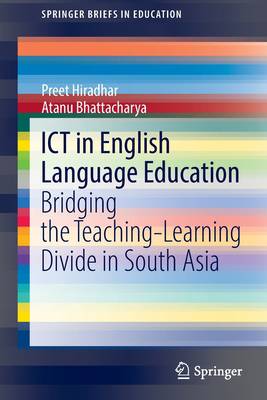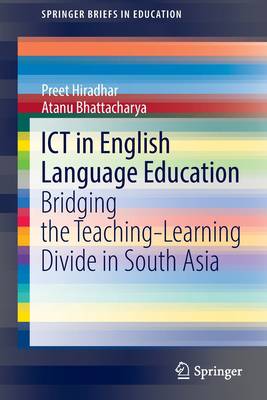
- Afhalen na 1 uur in een winkel met voorraad
- Gratis thuislevering in België vanaf € 30
- Ruim aanbod met 7 miljoen producten
- Afhalen na 1 uur in een winkel met voorraad
- Gratis thuislevering in België vanaf € 30
- Ruim aanbod met 7 miljoen producten
ICT in English Language Education
Bridging the Teaching-Learning Divide in South Asia
Preet Hiradhar, Atanu BhattacharyaOmschrijving
This book discusses the use of Web 2.0 tools to leverage students' own use of New Media, which can take learning beyond the classroom. This paradigmatic book will help language educators gain a better understanding of the shift in pedagogic practices through the incorporation of technology in language learning programs. It explores the theoretical underpinnings of ICT in education, before moving on to pragmatic considerations and subsequent implementation of ICT within and beyond language classrooms in the South Asian context.
The book covers a wide range of topics, such as the context within which ICT can be placed vis-à-vis teaching and learning in the digital age, as well as the role of ICT in communicative practices, and strategies used to bring these practices to the language classroom. It illustrates how ICT can be incorporated for both receptive as well as productive language learning skills, such as listening, reading, speaking, and writing within pedagogic frameworks.
Accordingly, it addresses affordable technologies and how they can be made a part of the teaching-learning experience. Finally, in terms of ICT beyond the classroom, the book provides a broader perspective on ICT in terms of selecting platforms or software, as well as the evaluation of ICT with special reference to ICT policies that offer language educators guidance on managing ICT frameworks within their institutions.
Given its scope, the book offers a valuable asset for language educators, teacher trainers, students, and researchers in education and linguistics programs within and outside South Asia.
Specificaties
Betrokkenen
- Auteur(s):
- Uitgeverij:
Inhoud
- Aantal bladzijden:
- 93
- Taal:
- Engels
- Reeks:
Eigenschappen
- Productcode (EAN):
- 9789811690044
- Verschijningsdatum:
- 2/04/2022
- Uitvoering:
- Paperback
- Formaat:
- Trade paperback (VS)
- Afmetingen:
- 156 mm x 234 mm
- Gewicht:
- 158 g

Alleen bij Standaard Boekhandel
Beoordelingen
We publiceren alleen reviews die voldoen aan de voorwaarden voor reviews. Bekijk onze voorwaarden voor reviews.











